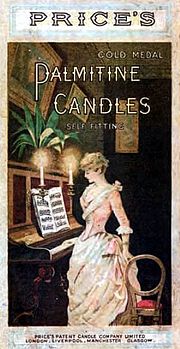Principles of marketing/PMKT103/Product branding distribution channels/Overview
Product Branding
Once marketers have identified the right product and determined appropriate pricing, they must decide how to effectively raise awareness of their brand and distribute the product.
The point of branding is to distinguish products from their competitors. A company must choose a branding strategy which best develops an enduring asset for the company to obtain target customers' loyalty. Over time, the brand becomes a key lever for sustaining market growth, and gaining competitive advantage and dominance in the market.
As a pioneer of branding, Procter & Gamble is an example of a company that successfully exploits brands for their market potential. In 2014, 21 brands in Baby, Feminine and Family Care products had annual sales of $1 billion to about $10 billion, and 11 with sales of $500 million to $1 billion. The global annual sales of the company was $83 billion in 2014. Familiar brands include:
- Beauty & Grooming: Always, Gilette, Head & Shoulders, Herbal Essences, Lacoste fragrances, Max Factor, Old Spice, Oral-B, Pantene, Tampax;
- Household Care: Ace, Ambi Pur, Ariel, Duracell, Lenor, Fairy Liquid, Pampers.
Distribution Channels
*Note: the terms 'distribution channel' and 'marketing channel' are generally used in marketing literature to mean the same thing and you will find both expressions used in this learning pathway.
Distribution is a complex process that involves taking a product through the manufacturing process, shipping to warehouses, distributing to sellers and customers, and taking returned products. Marketers must work with supply chain managers to determine the best method to route products. If marketers expect that sales will be heavier in the northeast than in the west, additional resources will need to be allocated to meet demand in that location.
Various strategies exist for moving a product through various distribution channels - varying on anticipated demand, actual demand, inventory and the competition. Marketers must be vigilant, with a proactive strategy: they cannot sit on inventory and wait for orders because inventory storage is expensive and a lack of sales is disruptive.
Multi-Channel Retailing
Multi-channel retailing is a distribution strategy to serve consumers using more than one selling channel. This strategy gives retailers an advantage of having an existing brand and multiple sources of customer contact. It allows retailers to interact with their customers using a combination of indirect and direct communication channels, therefore offering convenience and choice. For example, a candle manufacturer can sell its candles through established relationships with gift stores and specialty stores as well as its own corporate website / e-commerce channel and digital marketing efforts.

